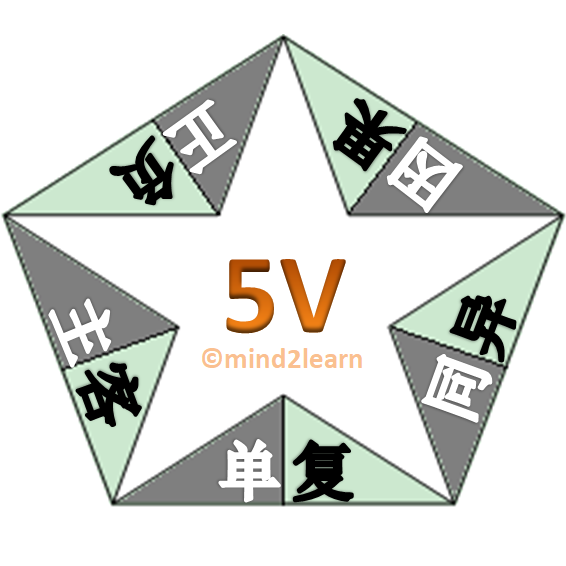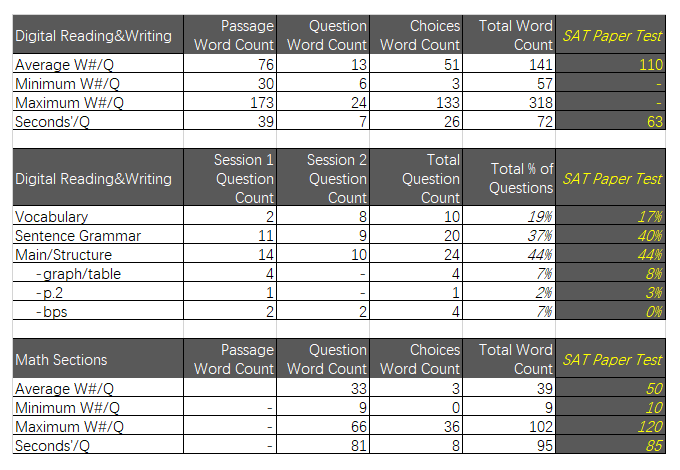Digital SAT model
Digital SAT 解 题 模 型
When a world is amazed by how ChatGPT can understand human languages, no one has a clearer idea than ours in teaching and learning a broad spectrum of languages, the languages of reading, writing, math, and sciences.
Our unique Unified Models, instead, regards and teaches math, reading, and sciences as languages by digesting the information in 5Vs, or five value pairs. They are positive-negative, subjective-objective, singular-plural, similar-different, and causative-resultative. Modeling in binaries ensures us the best efficiency in processing information, and efficiency is your most useful skill in taking standard tests.
Our unique Unified Models, instead, regards and teaches math, reading, and sciences as languages by digesting the information in 5Vs, or five value pairs. They are positive-negative, subjective-objective, singular-plural, similar-different, and causative-resultative. Modeling in binaries ensures us the best efficiency in processing information, and efficiency is your most useful skill in taking standard tests.
While your are able to see through SAT information in 5Vs, we will teach you how to the use the 5Vs in addressing the questions and choose one correct answers out of the four choices that SAT made to confuse you. That is the 4M principles, or Main Idea, Main Character, Main Subject, and Main Word. Using the 4Ms in 5Vs, you will be trained to see the right out of wrongs without even read the passage. Thus, the traps designed by the SAT will be no longer confusing to you.
DIGITAL SAT INSIDE-OUT 机考SAT分析
Two characteristics of the new digital test of SAT are its shrunk passages and extended time per question.
In the reading and writing sections, a short passage of 30-120 words is connected to one question only. This is the biggest change that the digital SAT brings to the college entrance standard tests in reading sections. The test also makes math questions considerably shorter in words, taking the math focus further away from your reading skills.
The second feature of digital SAT is the more time allowed to solve each question. In the reading and writing section, you are given 1'12" for each question, while in the math section you have 1'35" each. The time allowed in the paper test between 2016 and 2023 are 1'3" and 1'23" respectively. The SAT uses the extended times to become more user friendly.
Below are detailed analysis on the test, time, and amount information in word counts in the digital SAT.
Two characteristics of the new digital test of SAT are its shrunk passages and extended time per question.
In the reading and writing sections, a short passage of 30-120 words is connected to one question only. This is the biggest change that the digital SAT brings to the college entrance standard tests in reading sections. The test also makes math questions considerably shorter in words, taking the math focus further away from your reading skills.
The second feature of digital SAT is the more time allowed to solve each question. In the reading and writing section, you are given 1'12" for each question, while in the math section you have 1'35" each. The time allowed in the paper test between 2016 and 2023 are 1'3" and 1'23" respectively. The SAT uses the extended times to become more user friendly.
Below are detailed analysis on the test, time, and amount information in word counts in the digital SAT.
Among the numerous students in my class that achieved their 1500+ in SAT, three examples in 2023 who received their 1600 are Jason, Joshua, and Alice. The commonalities among them include a drive to academic excellence, an open-mindedness to learn new methodology, and a critical thinking to turn learnt into owned. They all came to my class with a bottleneck around 1500. Months of practice couldn't bring them to their deserved 1550+.
While learning from me to solve the reading questions without reading even a word in passages (sometimes not even read the question itself), they asked the critical question: why. Discovering their answers, they felt more confident on applying the skill in the test. In less than a month, their efforts and investment paid off.
While learning from me to solve the reading questions without reading even a word in passages (sometimes not even read the question itself), they asked the critical question: why. Discovering their answers, they felt more confident on applying the skill in the test. In less than a month, their efforts and investment paid off.




